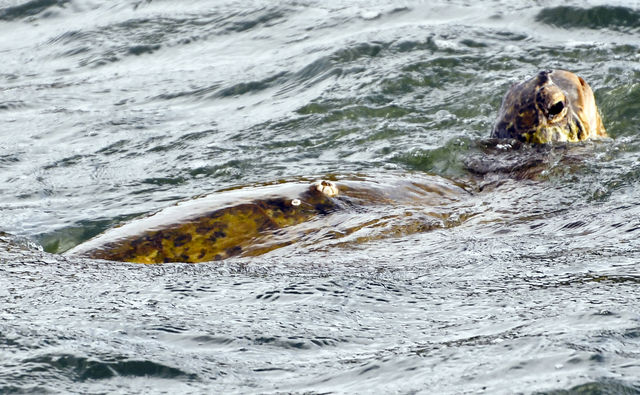LIHUE — Before you cruise the beach over the next couple months, remember that there could be more under your tires than just sand. It’s turtle nesting season and the weight of a vehicle over a nest will compact the
LIHUE — Before you cruise the beach over the next couple months, remember that there could be more under your tires than just sand.
It’s turtle nesting season and the weight of a vehicle over a nest will compact the eggs too tightly in the sand for the keiki honu to wiggle out when it’s time to hatch.
“Also, 4WD vehicles driving on beaches at night run the risk of running over the nesting female honu (green sea turtle),” said Don Heacock, Kauai’s aquatic district biologist at the Division of Aquatic Resources Branch of the Department of Land and Natural Resources.
Avoiding beach driving for the nesting season, which runs from May through July, and the July through September hatching season, is only one of the tips for helping the honu.
“Let sleeping turtles lie and watch them from a distance,” Heacock said. “Don’t feed them if they’re in the water and keep discarded fishing lines, nets and plastic bags out of the water — pick them up and dispose of them properly.”
Besides generally leaving the turtles alone and responsibly picking up after yourself, Heacock said there are a few special precautions to take during the nesting and hatching season.
He said it’s best to nix bon fires, bright lights, and flash photography at night for the summer. The main reason for this is that these types of bright lights can cause an adult female coming out of the ocean to lay her eggs to abandon the plan and go elsewhere.
It’s also helpful for the newly hatched honu, which work together to dig themselves out of the nests at night.
“They run to the ocean as quickly as possible,” Heacock said. “If bon fires are burning on a beach where honu hatch — and that could be nearly any beach on Kauai — the keiki honu will be disoriented by the bright light and will run directly into the fire.”
According to a news release from DLNR, fishermen are encouraged to use barbless circle hooks and if it’s safe for both the fisherman and the turtle, to release accidentally caught turtles themselves instead of calling a hotline.
Heacock said green sea turtles generally take between two and four years off in between nestings. One large female, which can reach four feet long and weigh nearly 400 pounds, can lay as many as six clutches, spaced two weeks apart. Each clutch can have more than 100 eggs.
Obvious digging activity and nesting evidence should be reported to Heacock or to the conservation hotline at 643-3567.
To report any injured sea turtle, or a turtle entangled in marine debris, contact Don Heacock at 645-0532, Katie Nalesere at 482-4297, or police dispatch at 241-1711.


